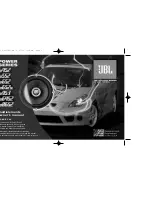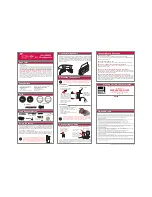
b.
Select your speaker wire and purchase the proper lengths.
Now that you know the speaker locations
and have a wire-routing plan, the wire lengths you’ll need can be estimated.
A good guide is to use 14 gauge wire for runs over 150 feet (the speaker terminals will accommodate 14-gauge
speaker wire). Behind-the-wall wire runs should use UL Class 2 or 3 approved cable to ensure compliance with local
building codes (it will be marked CL2 or CL3). Aperion Audio In-Wall & In-Ceiling Speaker Wire is perfect for this
job.
c.
Route speaker wires away from household wiring because electrical lines will interfere with your
speaker signal.
Avoid the temptation to “piggyback” and use existing holes in the studs where electrical
wiring runs. And, when possible, keep speaker wires more than 18” away from electrical wiring. If you need
to cross electrical wiring, go directly across at a 90° angle.
•
Many distributed sound systems feature individual in-room volume controls. This means you will need additional
wire runs from the control to the speaker so be sure to account for these when planning your wire runs.
•
If you plan to use more than two sets of speakers, be sure they don’t present an unsafe load to your electronics.
There are three ways to deal with this potential problem:
1)
Buy a distributed audio amp with one channel for each speaker.
2)
Buy a speaker selector.
3)
Buy impedence matching volume controls.
Speaker selectors are usually not recommended because they can greatly degrade the speakers’ sound quality (by
wiring your speakers in a series with one another or by placing a resistor in series with them).
E
XTRA
T
IPS
F
OR
D
ISTRIBUTED
S
OUND
12
Aperion Audio In-Wall and In-Ceiling Speakers (6-IC, 6-IW & 6-DT)
c.
After all the speaker locations have their outlines drawn, you may want to measure once more —
and make some small adjustments (as needed) to align them relative to one another.
d.
Carefully cut along these lines. A keyhole saw or dry-wall saw (about $10) is easy to control and will do
less damage than an electric jig saw. The speakers’ frames will overlap and hide the rough edges, so don’t
obsess about making absolutely perfect cuts.
9






























